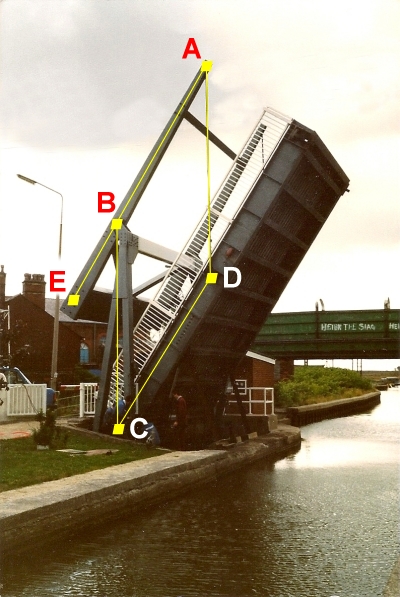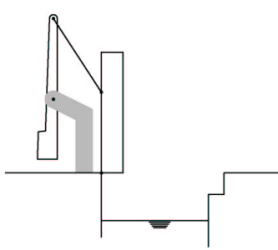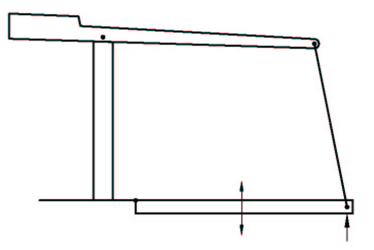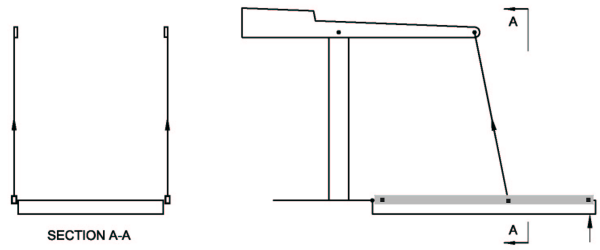
Bascule Bridges
Bascule bridges have counterbalance weights positioned either in the deck or in overhead
balance frames (as shown) to assist in the lifting operation of the deck.
The bridge shown consists of a moveable deck (C-D), tie rods (A-D), a balance frame including counterweights (A-B-E), and a portal support frame.
In order to guarantee equilibrium at every position during lifting, it is necessary to locate the pin connections in the balance frame at the vertices of a parallelogram (A-B-C-D).
As a second condition the virtual line between pivot B and the centre of gravity of the whole balance frame E, should be parallel to the virtual line between pivot C and the centre of gravity of the deck (approximately point D in the bridge shown).

Other considerations:
Offset columns can be used to allow larger rotational movement of the deck.

Any vibrations in the deck are transmitted to the frame.

If the pivot is positioned at the end of the deck at its neutral axis then no vibrations are transmitted to the frame.

Secondary beams attached at the ends of the deck can also be provided to avoid transmitting vibrations to the frame.

Bascule bridges with overhead counterweights (as shown above) are usually considered when the waterway width does not exceed 20 metres.
For spans larger than 20 metres this arrangement :
- requires use of excessive counterweights
- requires excessive power to operate
- requires use of an elevated bridge or use of a couterbalance pit to lengthen the counterbalance arms.
Spans larger than about 20 metres usually have the counterbalance weights positioned in the deck.

This arrangement requires the provision of a pit which preferably needs to be kept dry and is therefore usually positioned above the water level.
If the pivot points are positioned to the rear of the back of the deck then most of the rubbish on the deck can be prevented from entering the pit when the deck is raised.


